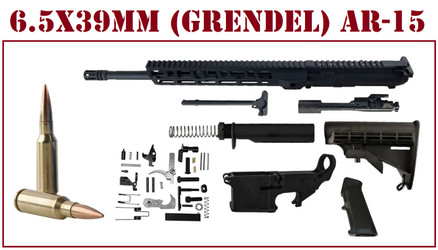The Guide to The 6.5 Grendel AR
Posted by 80-Lower.com on Aug 10th 2020
300 Blackout, 458 SOCOM, .308, 6.5 Creedmoor, 9mm, the list goes on. There are endless calibers being shoved into the AR platform for a myriad of uses. But why 6.5 Grendel? What's its purpose, and why bother chambering your black rifle in it? Today we're covering this cartridge, why you might want it, and how to build a proper AR-type rifle with it.
Frequent Questions
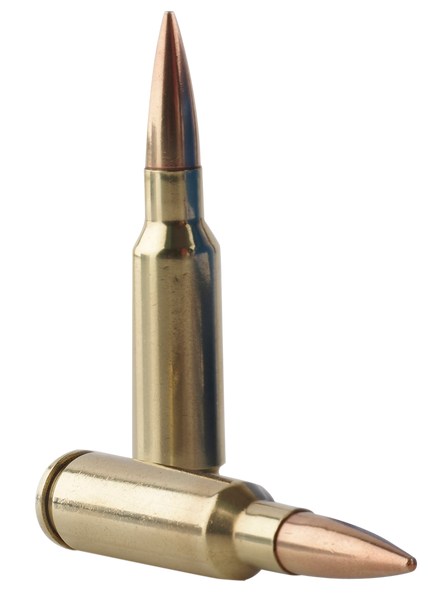
Q: What is 6.5 Grendel?
A: 6.5 Grendel is a low-recoil, long-range intermediate cartridge that measures 6.5x39mm. It's based on the .220 Russian, a 5.6x39mm cartridge which is essentially a combination of the AK-47's 7.62x39mm, and the AR's original 5.56 NATO.
Q: What kind of performance can 6.5 Grendel provide?
A: 6.5 Grendel fills the gap between 5.56 NATO and 7.62x51mm NATO (.308 Winchester), while providing better accuracy at long distance than either of the two. Officially, the Grendel was designed to provide an effective 200- to 800-yard cartridge for the AR-15/M16 platform that could fit in a standard magazine. This cartridge is heavier than .223/5.56 and uses more powder relative to its projectile when compared to .308 Win. So, it maintains a higher ballistic coefficient than .308 at distance and retains greater energy downrange than 5.56. It's capable of reliably striking and penetrating targets at 1,000 meters.
Q: What velocity and energy does 6.5 Grendel produce?
A: 6.5 Grendel's most common loads use bullets weighing 90 grains to 140 grains, producing muzzle velocities which typically range between 2,400 FPS and 2,800 FPS. It typically produces between 1,450 and 1,800 lb.-ft. of energy at the muzzle. For reference, most 5.56 NATO cartridges use 55-grain to 90-grain bullets and .308 cartridges typically use 125-grain to 185-grain bullets.
Q: What's the difference between 6.5 Grendel and 6.5 Creedmoor?
A: Both cartridges use the same .264" bullet diameter, but 6.5 Grendel is a smaller, lighter cartridge than 6.5 Creedmoor. It uses a smaller case with less powder. If both cartridges are firing the same 129-grain bullet, the Grendel case will produce 2,350 FPS while the Creedmoor case will produce 2,850 FPS. The trade-off is a Creedmoor rifle requires a longer barrel and is typically heavier with lower magazine capacity than a Grendel rifle.
Q: What's the "short and sweet?" How do I build a 6.5 Grendel AR?
A: The 6.5 Grendel AR uses mostly standard AR-15 (5.56 NATO or .223 Remington) parts. The only parts which differ are the barrel and barrel extension, bolt, and magazine. The 6.5 Grendel uses an AR-15 or M16 bolt carrier group with an upgraded bolt and extractor to handle this larger .264 cartridge. A 20" barrel with a 1:8 twist rate is optimal. Grendel AR magazines fit the AR-15's 5.56/.223 lower, but they have different followers and feed lips.
Q: So, can I just install a Grendel upper on my 5.56 or .223 lower?
A: Yes, if you already own an AR-15 chambered in 5.56 or that uses a standard lower receiver assembly for another cartridge, you can buy a 6.5 Grendel upper and install it on your lower.
Building an AR in 6.5 Grendel

We'll break down the proper specifications you should look for with this build, but first, we need to cover parts compatibility. There are some misconceptions when it comes to picking the 6.5 Grendel's bolt and extractor, so let's clear things up first.
Type 1 vs. Type 2 Parts
There is only one true 6.5 Grendel cartridge, designed and trademarked by Alexander Arms. It is nicknamed the "Type 2". When the cartridge was trademarked, any gun maker that wanted to produce 6.5 Grendel rifles or barrels needed to pay a royalty to Alexander Arms to use the Grendel name. But instead of paying the royalties to use the name, companies like Les Baer Custom (LBC) started cloning the cartridge and naming it something else. This spawned the creation of the .264 LBC, or the "Type 1". This cloned cartridge uses a slightly different bolt face depth, resulting in different headspacing. That means one must use a 7.62x39mm bolt and extractor.
- Trademarked 6.5 Grendel barrels, rifles, and bolts are called "Type 2".
- Cloned 6.5 Grendel and .264 LBC rifles and parts are called "Type 1."
- Type 2 bolts use .136" headspacing.
- Type 1 bolts use .125" headspacing.
When shopping for parts, anything marked "Type 2" is considered the real deal. Type 1 is considered a knock-off the Grendel's trademark. Most ARs chambered in 6.5 Grendel today use Type 2 barrels, bolts and extractors. The thinner headspacing of the Type 1 design is considered problematic and uses a weaker 7.62x39mm extractor that is prone to breaking. Why the "type 1" and "type 2" nicknames at all? A company called Black Hole Weaponry (BHW) started using these two labels internally to distinguish between their trademarked (6.5 Grendel) and non-trademarked (.264 LBC) parts. The phrases began being used by other manufacturers and it unfortunately stuck, causing confusion among AR builders and shooters.
Picking the Right Barrel

The whole appeal of going with this intermediate cartridge is enjoying long-range accuracy that largely exceeds .308 Winchester, and completely outmatches 5.56 NATO. But enjoying that level of performance means picking the perfect barrel.
Optimal Barrel Length: 20"
The 6.5 Grendel is a forgiving round and provides consistent velocity and energy in barrels ranging from 16" up to 24". This ballistic chart compares the performance of the cartridge in a 14.5", 16", 20", and 24" barrel using a 129-grain bullet. Comparing its performance across these four lengths, we find a 20" barrel generally provides the greatest performance for its size, with returns on your investment diminishing as you increase length any further:
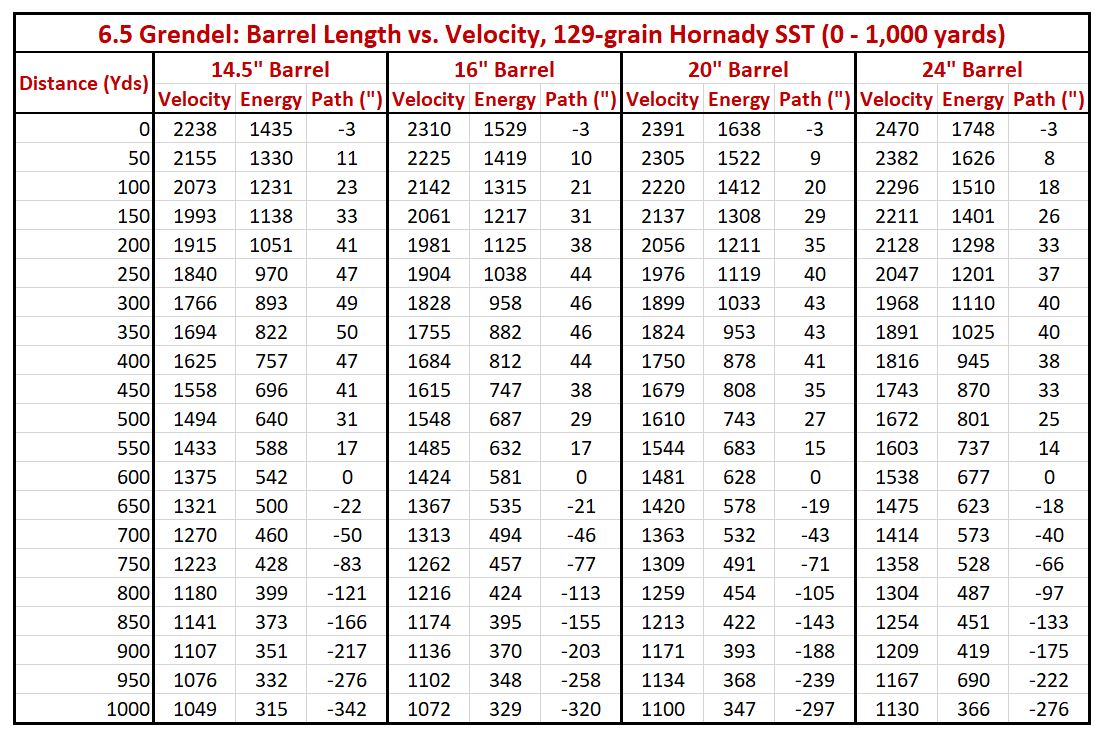
Data provided courtesy of Alexander Arms.
At 20", the arch of the bullet's travel remains very close to a 24" barrel's arch. At 800 yards, there is just a difference in drop of just 8 inches. At 1,000 yards, there's only an additional 21 inches of drop and a comparative loss in velocity of just 30 FPS. Even at the muzzle, a 24" barrel only provides an extra 80 FPS in velocity compared to a 20" barrel. Shorter 16" and 14.5" barrels begin to experience much greater drop approaching 1,000 yards. Yet even both these short barrels provide great performance out to 800 yards.
Optimal Twist Rate: 1:8 or 1:9
The 1:8 twist rate is typically the most popular choice among 6.5 Grendel owners. It properly stabilizes those heavy 130-grain to 140-grain Sierra Match King loads for precision shooting, without over-stabilizing the lighter 90-grain loads favored for plinking and simple range days. A 1:9 twist rate will suffice and may improve accuracy slightly, if you're shooting exclusively lighter loads.
Picking a 6.5mm BCG

Picking a BCG for your 6.5mm rifle can be confusing, partly thanks to that whole "type 1/type 2" bolt face depth situation we discussed earlier. 6.5 Grendel rifles are prone to breaking extractors for this reason. Let's break this section down piece by piece.
Bolt Carrier: AR-15 or M16
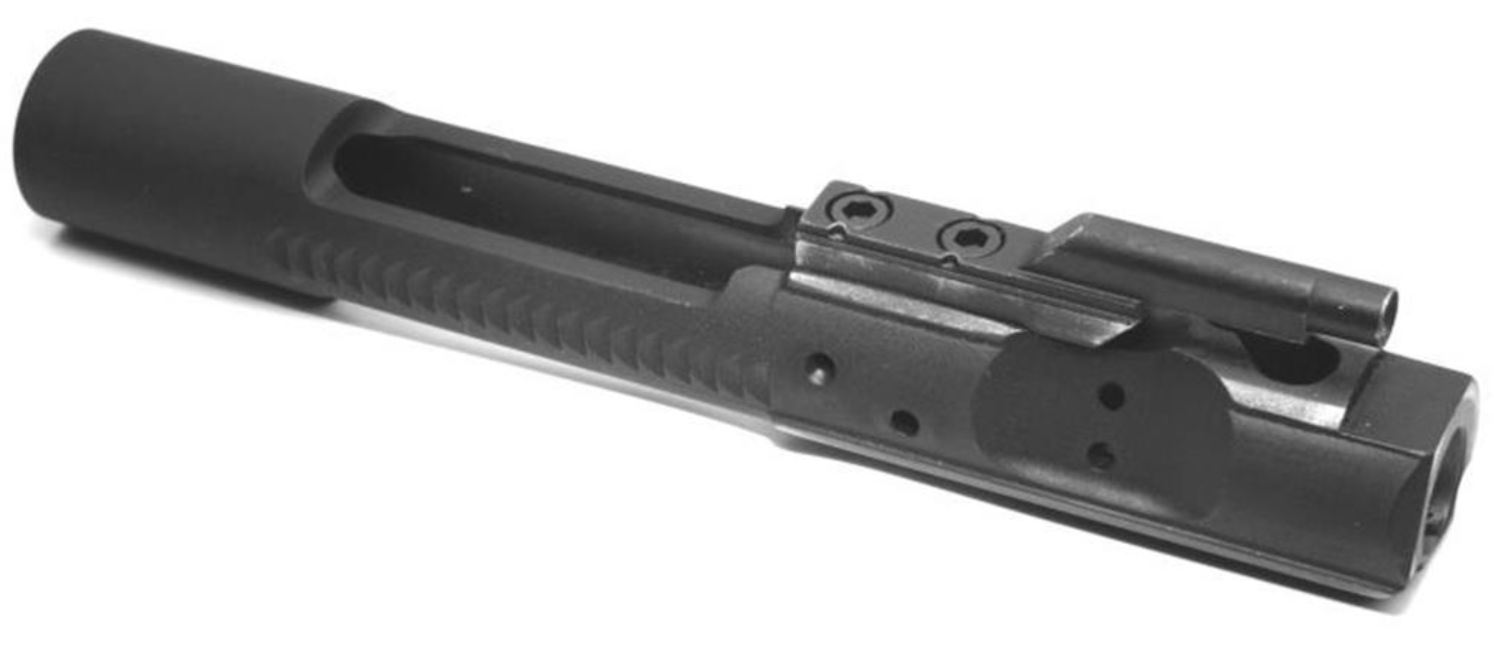
An AR chambered in 6.5 Grendel can still use a standard M16 or AR-15 bolt carrier, because these rifles also use a typical AR-15 stripped upper receiver and a nearly identical barrel extension. The bolt itself is almost identical in its design and dimensions to a 5.56/.223 bolt, so it fits inside the typical carrier.
Bolt & Extractor: "Type 2" 6.5 Grendel
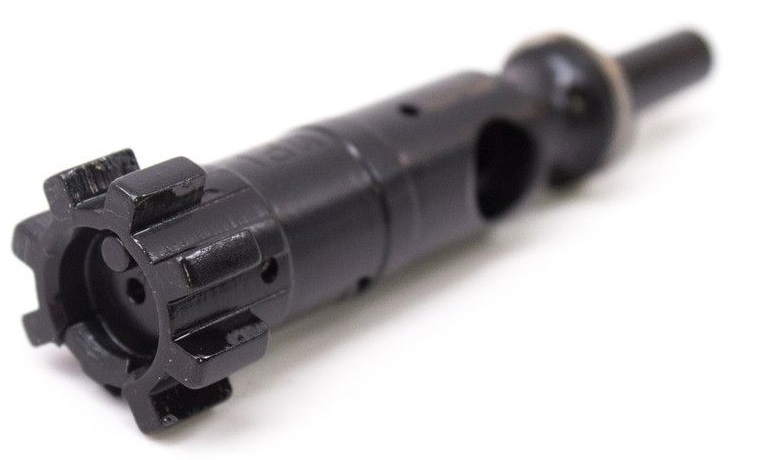
To ensure reliability with your new rifle, it's recommended you only run a 6.5 Grendel bolt advertised as either:
- Type 2 or measuring 2.810" in length
- Having a .135" headspace measurement
- Having a .136" bolt face depth or recess
- Not having a .125" headspace (Type 1)
This will greatly reduce the risk of breaking an extractor by ensuring the original intended bolt face depth is utilized when cycling and ejecting rounds.
Q: Can I use a 5.56 firing pin with my 6.5 Grendel bolt and carrier?
A: Yes. A 5.56/.223 firing pin from an AR-15 or M16 can be used in your 6.5 Grendel when using a proper bolt. The 6.5 Grendel bolt should measure 2.810" in length. Some bolts have been found to measure 2.800", resulting in excessive firing pin protrusion.This can cause pierced primers and damage to the pin.
Q: Can I run a 5.56 bolt in my 6.5 Grendel, and just replace the extractor?
A: No. Because the 6.5 Grendel case is based on the AK's larger 7.62x39mm case, the AR's 5.56/.223 bolt face is not able to capture the rim of the cartridge to chamber or extract it.
What Upper Does 6.5 Grendel Use?

Since it uses a mil-spec AR-15 bolt carrier, the 6.5 Grendel also uses a regular stripped upper receiver designed for 5.56 NATO and .223. No special modifications or other parts are required for a 6.5mm build. The Grendel uses the same type of barrel extension for its bolt, so the 6.5mm barrel installs onto the stripped upper with a conventional barrel nut like any other AR-15.
The Grendel and Gas System Length

The Grendel most often utilizes a Mid-Length gas system for barrels up to 18", with a Rifle-length gas system utilized on barrels measuring 20" or longer. Rifle-length gas systems can be utilized on 18" barrels without issue, and doing so may reduce felt recoil. A carbine gas system on any Grendel AR will likely feel over-gassed and punchy.
Picking the Right Lower Assembly

Since the 6.5 Grendel uses a regular AR-15 upper receiver, the lower assembly must match. You'll be using a mil-spec forged or billet lower receiver, the usual single-stage trigger and a regular AR-15 lower parts kit with a standard disconnector, safety lever, and hammer.
6.5mm Buffer Weight
Surprisingly, the Grendel cartridge is readily designed to accept the standard AR-15 buffer weight, too. That means you're good to go if you purchased an AR-15 lower or parts kit that logically came with a Carbine (3.0-ounce) or Heavy (3.4-ounce) buffer. You can run these buffer weights in your Grendel gun and enjoy the appropriate level of felt recoil and reliability in cycling and function.
Why not a heavier buffer?
Even though the working pressures of the 6.5 Grendel and 5.56 NATO cartridges are different, the Grendel's higher case capacity means it produces a highly similar gas port pressure as the smaller 5.56 NATO. And because gas pressure remains the same for both cartridges as their bolts are cycled, they both use the same Carbine or Heavy buffer.
Can 6.5 Grendel Use 5.56 Magazines?
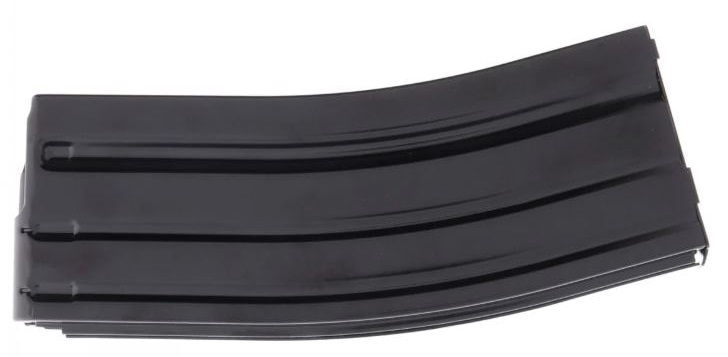
Technically, yes. It is not recommended. While the 6.5mm cartridge will fit inside a 5.56 NATO magazine, the follower and lips of that magazine are not designed to accommodate this larger cartridge. Bulging magazines and unreliable feeding can result from this, and only 6.5mm-specific magazines should be used with your Grendel AR.
Summary
- The 6.5 Grendel is a .264 cartridge capable of reliably hitting targets at 1,000 yards.
- This intermediate cartridge is designed to fill the gap between 5.56/.223 and .308 calibers.
- The Grendel AR uses a regular AR-15 upper receiver and 5.56/.223 lower receiver assembly.
- You'll need to swap out the bolt and extractor in your Grendel's BCG for a 6.5mm bolt assembly.
- Optimal barrel length for this cartridge is between 18" and 24"; 20" is considered the best length.
- You'll want to stick with a 1:8 or 1:9 twist rate. 1:8 favors all 6.5mm loads, while 1:9 favors light loads.
- You'll also want to stick with a Mid-length or Rifle-length gas system. The latter will reduce felt recoil.
- AR-15 magazines can work with Grendel ammo, but you may experience issues with feeding.
Checkout available 6.5 Grendel Rifle Kits Here: https://www.80-lower.com/collections/6-5-grendel-build-kit/
DISCLAIMER: If you are new to the world of DIY gun building, you likely have a lot of questions and rightfully so. It’s an area that has a lot of questions that, without the correct answers, could have some serious implications. At GunBuilders.com, we are by no means providing this content on our website to serve as legal advice or legal counsel. We encourage each and every builder to perform their own research around their respective State laws as well as educating themselves on the Federal laws. When performing your own research, please be sure that you are getting your information from a reliable source.

